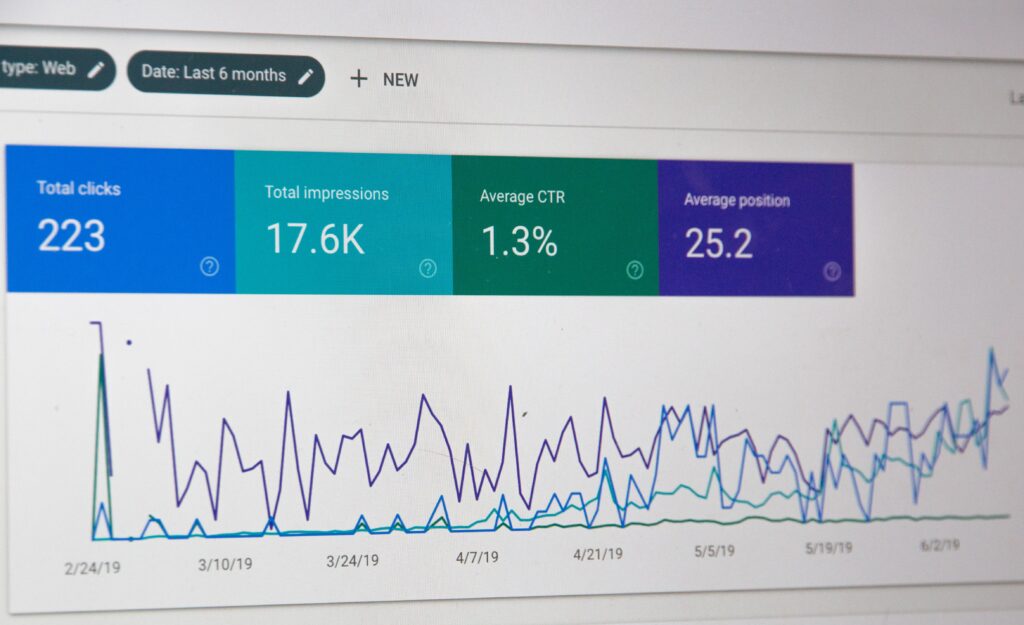Did you know that a 60-second video is equal to about 1.8 million words, according to Forrester Research? There is no doubt that today’s consumers prefer audiovisual content to textual content. But this format promises to come as a surprise in 2019 in ecommerces promotional campaigns. Why is video marketing so effective?
Optimizing ROI in advertising campaigns, increasing conversions or improving organic positioning on the Internet are some of the invaluable benefits of video marketing. It’s not surprising, then, that online retailers and other companies have joined the video content fever – they really are very powerful!
What will you find in this article?
- 6 keys to understanding why video marketing is so effective
- They increase the number of clicks
- Helping to increase sales
- Bringing a plus to SEO
- Improve the presentation of products or services
- Optimize the ROI of marketing campaigns
- Encourages trust towards ecommerce
6 KEYS TO UNDERSTANDING WHY VIDEO MARKETING IS SO EFFECTIVE
Numerous statistics demonstrate the power of audiovisual content to attract, retain and generate investments. However, many people are still wondering why they should use video marketing. In the following lines you will find a list of benefits, supported by data, that will convince you. Are you going to lose them?
THEY INCREASE THE NUMBER OF CLICKS
Achieving an optimal click rate can be a challenge in certain sectors. However, the use of video content has been shown to increase the number of clicks in PPC ads and the opening rate of emails in mailing campaigns. The explanation is that moving images attract more attention than static images or textual content.
Thus, thanks to the use of videos, it is possible to easily improve the performance of marketing actions. But conversions and ROI also increase with video marketing, as will be revealed in the next point.
HELPING TO INCREASE SALES
Another answer to why video marketing is so powerful lies in the most important metrics of any campaign: conversions, i.e. sales achieved. This is demonstrated by an interesting study by Vidyard: more than 7 out of 10 marketing professionals (71%) say that their conversion rates with the use of videos are higher than the rest of the content used.
Leaving aside this and many other studies, ecommerces must dare to use video marketing in their campaigns. Only then will they discover whether their sales improve or not. Of course, common sense says this format will improve their sales performance. Why else Amazon, eBay, AliExpress and other ecommerce giants are investing millions in video marketing?
BRINGING A PLUS TO SEO
Organic positioning in search engines has ceased to be a fashion, to become consolidated as one of the main marketing strategies in e-commerce. The algorithms of Google, Bing or Yahoo change rapidly, and in 2019 various statistics suggest that video content will play a crucial role.
According to a Video Explainers report, video content is an ally for SEO campaigns: a page is 53 times more likely to be at the top of SERPs if it contains at least one video. This curious fact probably exaggerates reality but reveals the value that search algorithms attach to this content.
On the other hand, it is important to include YouTube in the equation: after Google and Amazon, the YouTube search engine is the most used on the Internet. And since this site is owned by Alphabet, like the famous Mountain View search engine, using video marketing should be a winning strategy in every way.
IMPROVE THE PRESENTATION OF PRODUCTS OR SERVICES
The boom of videos on product sheets is far from being an isolated trend. More and more consumers are looking for content in this format about products and services. Why? Because it is more comfortable to watch tutorials or video guides than to read texts with the same amount of information.
This does not mean that ecommerces should dispense with textual content. But the use of videos has ceased to be an option, to become a necessity for companies. Without a doubt, another interesting answer to why video marketing is so effective.
OPTIMIZE THE ROI OF MARKETING CAMPAIGNS
Due to some of the above benefits, video marketing has a very positive impact on the ROI of ecommerces. In fact, 8 out of 10 companies (83%) say that the return on their video marketing campaigns is very positive, according to a study by Wyzowl.
However, audiovisual production is an art that not all companies dominate. It is important to partner with professionals specialized in this type of marketing. Only in this way will it be possible to achieve good results and, therefore, an optimal return on investment.
ENCOURAGES TRUST TOWARDS ECOMMERCE
Another advantage associated with video marketing is trust, which is essential to achieve sales, customer loyalty and a better ROI than the competition. That’s why marketing veterans say that trust is the cornerstone of all business relationships.
But why does video marketing produce this benefit? Due to the limitations of e-commerce (where consumers cannot touch, smell or taste products), there is a certain distrust of buying online. However, the use of product videos has proven to be an excellent remedy to combat this problem.
Almost 6 out of 10 online consumers (57%) say that the presence of videos positively influenced their purchasing decisions, according to data published in an eTailing white paper.
In view of the above, it seems clear that the importance of video in marketing is beyond doubt. According to a Cisco study, 80% of online traffic from shoppers will be video. As a result, today’s ecommerces that rely on video marketing will be tomorrow’s big winners.
THE IMPORTANCE OF VIDEO MARKETING

It’s not too hard to see why video is so popular these days — for one thing, it’s an easy-to-digest format that gives our eyes a rest from the overabundance of textual information online. This would be why the world reportedly watches 1 billion hours of YouTube social video per day.
And those of you who are headed towards digital marketing careers should have a complete understanding of the power of video as a marketing tool. This is not only because they might be interested in making amazing videos, but because they’ll probably have to learn to incorporate video into their content in order to remain competitive.
Here we’ll outline some best practices for digital marketers to create and share video, and highlight 5 key reasons why video is so crucial to your marketing strategy.
Why Video?
Video is a versatile and engaging content format that not only gives us a real-life picture of what is going on; it’s also easy to share across multiple platforms. Consumers like it because it’s easy to digest, entertaining and engaging, and marketers like it because it can give a potentially huge return on investment (ROI) through many channels.
Video is also very accessible to anyone with internet access, both to watch and to produce. While there is certainly a trend towards higher quality video on a professional level, anyone can hop onto their laptop and create their own video in under an hour.
Types of Video
There are plenty of different types of videos out there and part of creating an effective content marketing strategy is having a solid understanding of your purpose before you sit down and create the video (or any other type of content, for that matter). To that end, you want to make sure the both the type of the video and the channel purpose (if you’re posting on social) fit the purpose of the video itself.
Here’s a breakdown of where you can be using different types of videos.
Explainers can help educate people about your product and can be used in conjunction with instructions, customer service activities, and a whole other range of applications.
Interviews can help to encourage conversation between sides, or showcase a special guest or influencer. If you are creating videos featuring guest experts, for instance, you can always re-use the audio and market it as a podcast.
Product reviews and demo videos can be created by brand ambassadors in exchange for free products. If you can find people in your industry looking to boost their social following, this can be a great way of essentially getting free advertising. Doing this can also help you to find out information about the product if the people doing the video reviews have a lot of engagement and comments. So in a sense, it can function like market research.
Live video is the best chance to get up close and personal with your audience, and it works well on social channels in particular.
5 Stats that Prove Marketers Need Video
1. Informing and Educating
97% of marketers claim that videos help customers understand products. (Orbelo)
For the most part, marketers today are no longer taking a pitching type of approach – the reason? There’s simply too much choice out there. Consumers and businesses simply don’t’ need to be sold to; instead, they’re doing a quick internet search to find the best product in their neighbourhood or even in the world where they’ll proceed to order it online.
To this end, marketers in many fields (perhaps not all) need to approach audiences with a value-based offer instead of a “sale.” And videos excel at giving customers a really up-close look at a product, service, or even an influencer or teacher.
2. Search Engine Optimization
Over 80% of all traffic will consist of video by 2021.
Search engines love videos because they see them as high-quality content, so to this end, using videos in various types of content as well as on your main web pages can work wonders for your SEO — as long as the videos themselves are optimized properly as well. This means incorporating the right keywords, a solid meta description, and also a strong title.
3. Staying Competitive
81 % of businesses are now using video for marketing. (Orbelo)
Videos are amazing for getting all sorts of messages out there, and if we think in terms of practicality, a short, unique explainer video can do a world of difference when it comes to educating people on the ins and outs of your particular product. By using storytelling and unique types of media you can easily catch people’s attention and hold it while they’re actually entertained.
Depending on how it matches your product, you may want to use an animated or illustrated explainer video to stand out from the crowd (and not come across as too in-your-face).
4. Getting Personal
Live video will account for 13 % of traffic by 2021.
Ever wanted to check out Facebook Live or Instagram stories? If you’re in a digital marketing career, or you’re heading in that direction, you’ll need to learn how to create basic videos and optimize them.
Instagram Stories and Snapchat are both awesome for offering people intimate glimpses or short, personal glances of what you’re up to and they are so great for creative tools. The interesting thing about these videos is that they’re only up for 24-hours so that creates more of a real-time feel. It also gives marketers the opportunity to develop ads that are focused on time-sensitive promotions.
Real-time, ephemeral content is great for:
- Offering a feel of face-to-face interaction
- Building brand trust
- Offering audiences casual, interesting updates (eg: behind the scenes)
5. Boosting Conversions
90% of consumers claim a video will help them make a purchasing decision.
Wyzowl claims that 74% of people who get an opportunity to see a product in action via an explainer video will buy it. And landing pages are great places to place videos, too. — supposedly boosting conversion rates by up to 80% (just be sure to keep autoplay off so as not to scare the customer away with loud noises).
Another reason why video is great for conversions on websites is that they actually keep people around for long enough to look around on the site. This is especially true for those who aren’t big readers (a good rule of thumb is to assume that people’s eyes could be tired from looking at a screen all day). Supposedly people watching a video stick around for some two whole minutes longer if there’s a video.
Tips for Best Practice Video Marketing
Okay, there you have some amazing reasons for incorporating video into your marketing activities, or learning how to create awesome videos if you’re interested in digital marketing careers. But how do you actually go about making a video that’s engaging and optimized? Here are some tips.
First off, figure out what the ideal video length is for your platform – here’s what Hubspot recommends:
- Instagram: 30 seconds
- Twitter: 45 seconds
- Facebook: 1 minute
- YouTube: 2 minutes
Other things you’ll want to to to ensure the best engagement and accessibility as well as boost your SEO include using captions for autoplay and keeping the video on silent if it’s on a landing page. Videos on landing pages can be very effective but only if they don’t scare viewers away. You’ll also want to be sure to keep your video mobile friendly across the board.
In order to understand how your videos are performing, practice good SEO standards and always check your metrics. You can develop a standard library of various videos and keep them organized in YouTube, then incorporate them into various forms of content such as blogs and emails.
And don’t forget about your call-to-action, which on YouTube usually consists of a little annotation suggesting that users subscribe to your channel.
Conclusion
Video is one of the most popular content forms in the world and the truth is that it’s not likely to be going anywhere soon. And it makes sense: in an impersonal digital world, we’re craving connection and personality. We want to see and hear people in a real-life context — it’s meaningful.
Video is not only fun, it’s really one of the best ways to get up close to your audience and give them a real glimpse of what you and your business or your clients are doing. The key here is to think beyond profit and product — show them something about your philosophy, or share some information on an interesting event, or offer some valuable information. The more they know about your positive practices, the more likely they are to stick around.




